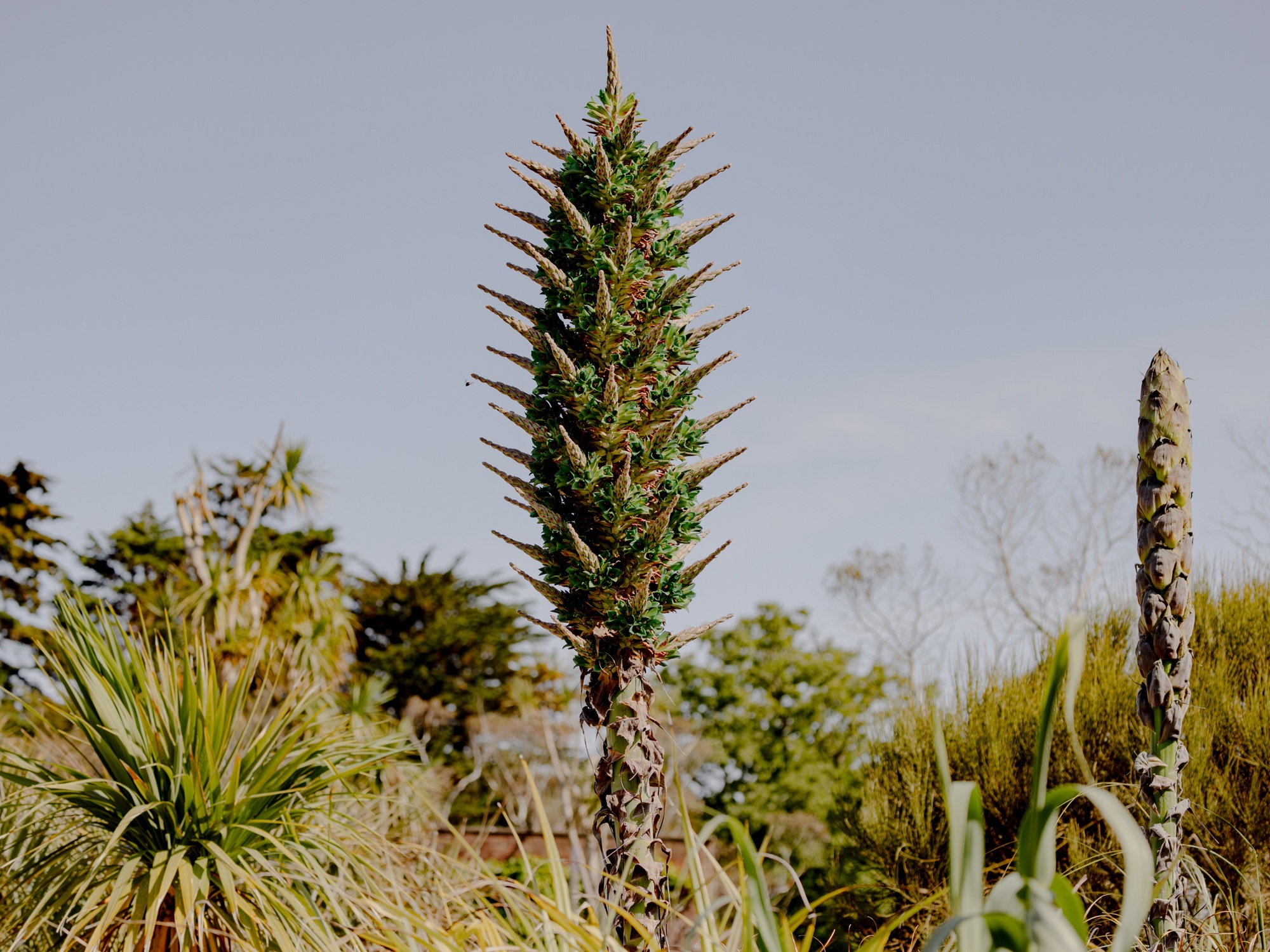As Scotland prepares for global audiences at the COP26 climate change summit, a giant silk Golden Monkey clinging to a capital building is an exuberant call for action in saving the planet. Behind the cheerful 10m sculpture, enthusing its new fans at the Royal Botanic Garden Edinburgh (RBGE), is the message that we have the science and expertise to save endangered primates and the health of the planet. But, we must move quickly.
This eye-catching representation of an endangered golden snub-nosed monkey (Rhinopithecus roxellana), by Australian ecological artist Lisa Roet, calls for resilience and renewal. Once widespread, the species is now restricted to a small area of steep forested mountains in central China: one of only five known species of snub-nosed monkeys native to Myanmar and China, all of which are listed as either endangered or critically endangered. While each species lives separately in temperate forest areas, they have two important commonalities. They all depend on trees for shelter and food – and, in every case, their forest habitats are disappearing, largely because of human activity such as logging.
Martin Gardner, coordinator of the International Conifer Conservation Programme (ICCP), based at RBGE, said the Golden Monkey should be hailed as a pointer to the critical interdependencies between humans and wider nature: “In the dual threats of the biodiversity crisis and climate emergency, we are witnessing unprecedented pressures on plant and animal species,” commented. “The disruption of ecosystems causes devastation to the natural environment and also has direct impact on human livelihoods, health and wellbeing. However, we do have the scientific knowledge and expertise in conservation horticulture in taking measures to mitigate much of this degradation and conserve the health of the planet. The Golden Monkey hanging on to Inverleith House Gallery could be seen as an analogy of refusing to let go of our determination.
“While the Biodiversity Crisis and the Climate Emergency are responsible for the devastation of forests around the world, destroying the plants and creatures within them, RBGE and its partners are working hard to redress the balance. All life as we know it is dependent on plants and fungi and we are documenting plant diversity, providing the scientific evidence to inform decision-making to reduce biodiversity loss, mitigate and adapt to the impacts of climate change and live sustainably. As a network, botanic gardens globally also have the expertise in conservation horticulture to work towards repairing damaged landscapes. And, to educate those who wish to play their part. However, it requires the buy-in of governments, major corporations and individuals.”
Conifer conservation has an important role to play in protecting global biodiversity. Vast numbers of mammals, from the snub-nosed monkeys to Scottish wildcats and pine martens depend on conifers. Yet, 34 per cent of conifer species are threatened. For nearly 30 years the ICCP has worked in more than 50 countries around the world, focussing particularly on Chile, New Caledonia, Lao PDR, Vietnam, China and other parts of Southeast Asia.
“Biodiversity loss and climate change are inextricably linked to human wellbeing,” he added. The COVID-19 pandemic has highlighted the interrelationship between environmental health and human health, and the massive humanitarian, social and economic costs of wider environmental degradation. While time is incredibly tight, if we provide the means for people to understand how their actions can make real difference there is much about which we can be positive. If a giant monkey in the heart of Edinburgh can spark debate that must only be positive.”
Regius Keeper Simon Milne, has championed the need to consolidate art within science as a means of communicating the threats of biodiversity loss and climate change. He explained: “The world’s life support systems are in a hazardous state and the impact of this on the health and wellbeing of people across the continents is both apparent and frightening. The specialist work of the Royal Botanic Garden Edinburgh has never been more important to address the huge and interconnected challenges of biodiversity loss and climate change. Integral to this is the understanding that effective change requires a real desire for everyone to play their part in protecting our planet.
“The symbiotic relationship between science and the arts has a vital role in encouraging us all to see our world in new light. Bold and exciting initiatives such as the installation of this Golden Monkey create fresh opportunities to engage extended audiences. In developing a programme that integrates art with our core environmental work, we can communicate key messages and capitalise on our position as a world leading botanic garden”
Emma Nicolson, Head of Creative Programmes at RBGE concluded: “This installation has been an important part of our inaugural season of Climate House, a five year project during which we will present works from artists around the world reminding us that we all need to act, and now, to prevent further ecological disaster. COVID has highlighted many issues around our relationship with animals as well as raise awareness of the value of being in nature. It’s wonderful to hear visitors gasp delightedly as they come across the Golden Monkey. If people are out for their daily exercise, in line with Scottish Government guidelines, I hope the enjoy the spectacle and reflect upon the story behind it.”

